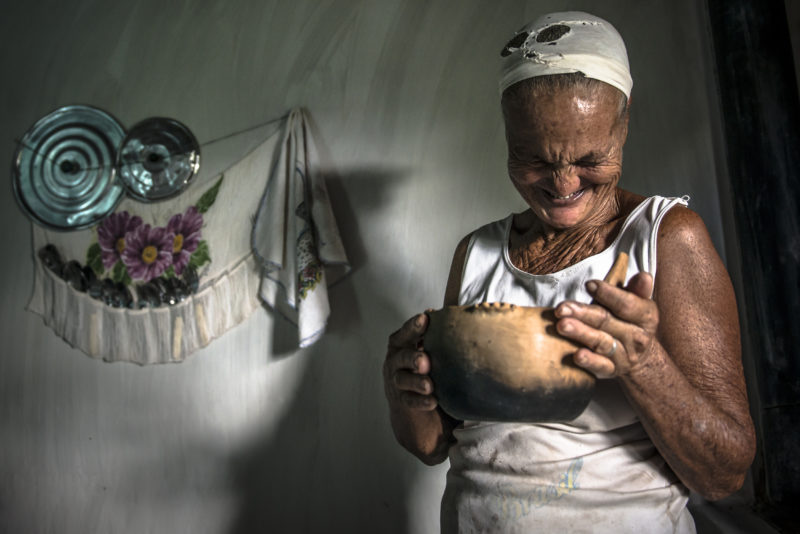In the North of Minas Gerais there is a place filled with cultural wealth that is worth visiting. The Jequitinhonha Valley is a region full of history and many contrasts. Although primarily known because of its poverty, the Jequitinhonha Valley is much more than this. It is a city that should be known for its traditional culture, unforgettable landscapes and delicious gastronomy. Vale do Jequitinhonha is the perfect representation of the real Brazil and what it has to offer.

© André Dib
Surrounded by the Jequitinhonha River and its tributaries, legend has it that the region’s name originated from the indigenous people who inhabited the valley. “Jequi” was a type of trap to catch fish, which were also known as onhas. According to local tales, the males would place the jequi in the river in the evening, and the next morning, they would tell their sons: Go boy, go and see if the jequi has onha.”
“Conta, canta contador,
Conta a história que eu pedi
Dizem que o Jequi tem onha,
Conta as onhas do Jequi”
Translation: tell me what I wanted to know. They say that there are fish in the trap. Count them for me.
These are the poetic verses from the musical stylings of Gonzaga Medeiros, who recounts the prosperous history of the Jequitinhonha Valley, which mimicked the socioeconomic situation of the state of Minas Gerais. The state, from the 17th century onwards experienced a gold rush which was then following by a diamond mining boom that attracted many people to the region.
These prosperous times cause rapid urbanization and when the gold and mining booms stopped, the region experienced issues related to overpopulation, such as food shortages. These problems painted the region in a negative light, known only for its social problems and extreme poverty.
However, this is not the real Jequitinhonha Valley, after all the term wealth does not necessarily have to be defined in monetary terms. Jequi has something much more precious, human wealth, defined by culture values, natural beauty and the strength of a community of people with a desire to share their story.

© André Dib
Indigenous influence manifested in culture and the arts
Indigenous influence is what makes the Jequitinhonha Valley truly unique and known throughout Brazil for its art. Leather work, embroidery, drawings, weaving, music, painting, wood carvings, and of course, ceramic handicrafts are some of the region’s trademarks – knowledge and skill handed down from generation to generation by master artisans.
All this artistic work, besides redeeming and reinforcing the local identity, contributes directly to the local economy. The sale of handicrafts is the main source of income for many families and the pieces have a unique characteristic.
Strong people and women full of stories to tell

© André Dib
In the Jequitinhonha Valley, the women are on the front line. Due to the migration of their husbands to the big cities, these women are known as the “widows of the drought.” They earn their livelihoods through subsistence agriculture, handicrafts and, most recently, through community-based tourism, which contributes to the development of these communities.
They are typically mineiras (people from Minas Gerais), these communities are filled with individuals that are ready to welcome you into their home with a smile on their face and an incredibly story to tell.
Flavors and knowledge typically Mineiros
Ahh, the mineira food is delicious! Sweets galore, pao de queijo (cheese bread) in abundance, but it doesn’t stop there. The mineira cooks prepare meals influenced not only by the Vale but also by other states such as Mato Grosso, Goiás and Bahia, bringing also elements in common with the cuisine of the Center West and Northeastern.
Have you been to the Jequitinhonha Valley?
Many things are hidden there can be revealed by walking under the starry sky, strolling through the cobblestone streets, admiring the different landscapes, listening to the crickets and birds singing and learning Portuguese, in the mineirin accent of courses! If you’re looking to experience the real Brazil, then look no further than the Jequitinhonha Valley.






